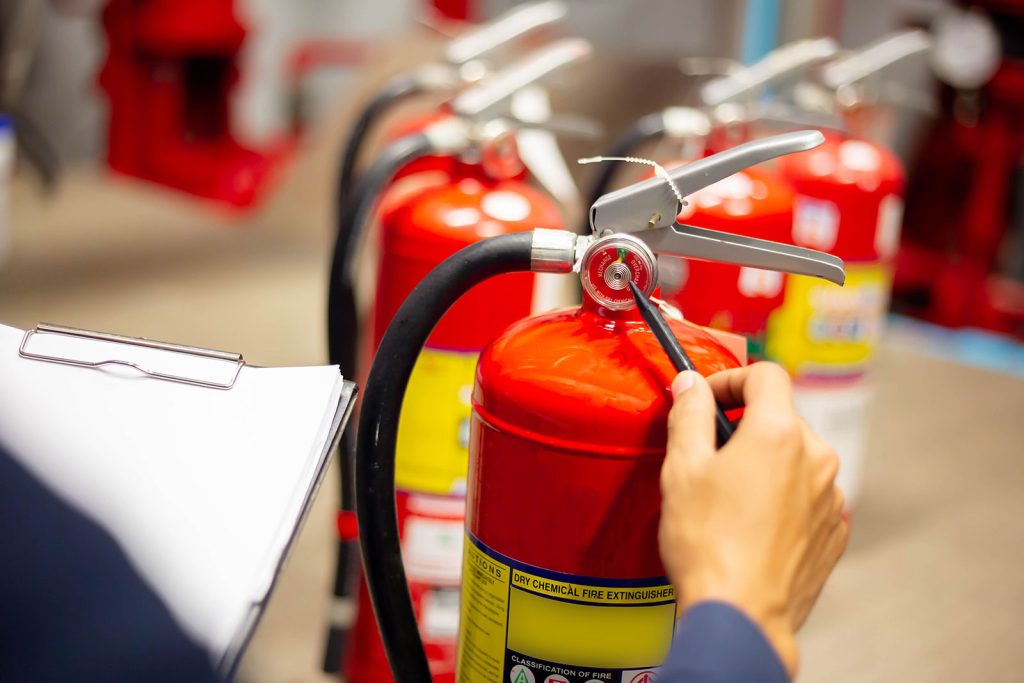
Workplace hazards
Fire

Workplace risks for fire refer to potential hazards and conditions within a work environment that could lead to the outbreak of a fire. Identifying and mitigating these risks are essential components of occupational health and safety practices.
Understanding the specific factors that can contribute to the risk of a fire helps organizations implement preventive measures and emergency response plans.
Common workplace risks for fire include:
- Electrical management, overloaded circuits, faulty wiring, damaged electrical leads or malfunctioning equipment.
- Flammable materials, such as liquids, gases and combustible dust.
- Heating Equipment; improperly maintained heating equipment.
- Ignition sources; open flames, welding operations, grinding (hot works).
- Smoking: in areas where prohibited, improper disposal of cigarette butts or failure to provide designated smoking areas can increase the risk of fires. Strict nonsmoking policies and proper disposal facilities help mitigate this risk.
- Flammable liquids and gases; inappropriate storage, handling and transportation of flammable liquids and gases
- Cooking facilities: Workplace kitchens or cooking facilities, unattended cooking equipment, grease build up and faulty appliances, including keeping work areas clean and organised.
- Emergency exits and evacuation routes; blocked or obstructed emergency exits and evacuation routes can hinder the safe evacuation of employees during a fire. Regular inspections and clear evacuation procedures including evacuation diagrams and drills.
- Inadequate training and awareness; lack of employee awareness and training in fire safety measures, including proper use of fire extinguishers and emergency evacuation procedures. Regular training programs enhance preparedness.
- Completed maintenance of – fire extinguishers (inspection and pressure testing) tags in place, fire hoses, sprinkler systems, fire alarms, exit lighting.
- Disposal of fire blankets after single use.
- Placement of fire extinguishers is governed by Australian Standard 2444 and the Building Code of Australia. As a guide the requirement is one extinguisher every 15 meters if practicable for Class A fires and every 20 meters for Class E and F fires.
Health & Safety

Health and safety risks in Australia, as in any country, refer to potential hazards or dangers that can adversely affect the well-being of individuals and impact their safety in various settings.
In Australia, health and safety risks are addressed through a combination of legislation, regulations, and workplace practices to ensure the protection of workers, the public, and the environment.
The primary goal of health and safety initiatives is to prevent accidents, injuries, and illnesses by identifying and mitigating potential hazards and risks.
Key components of Health and Safety are:
- Risk Assessments
- Regulations and Legislation
- Preventative Measures
- Training and Education
- Emergency Preparedness
- Ergonomics
- Workplace Inspections
- Health Surveillance
- Incident Reporting and Investigations
- Collaboration and Communication
- Psychosocial Well-being
- Safety Culture
Chemical Hazards

Exposure to hazardous substances and chemicals in the workplace. Chemical hazards refer to substances that can pose a risk to human health, safety, or the environment due to their chemical properties.
Understanding and managing chemical hazards are crucial to preventing accidents, injuries, and adverse health effects. Here are some key aspects of chemical hazards:
Key components of Chemical Hazards are:
- Toxicity
- Flammability
- Explosivity
- Corrosiveness
- Reactivity
- Allergenicity
- Sensitisation
Effective management of chemical hazards involves implementing control measures, such as using personal protective equipment (PPE), proper ventilation, storage, and handling procedures, as well as providing adequate training and information to individuals working with or near hazardous substances. Regulatory agencies often establish guidelines and regulations to ensure the safe use, transportation, and disposal of chemical substances. Employers and individuals alike play a crucial role in identifying and mitigating chemical hazards to protect health and safety.
Physical Hazards
These include risks associated with:
- Machinery
- Equipment
- Noise
- Vibration
- Manual handling
Biological hazards
Risks related to exposure to biological agents, such as:
- Bacteria
- Viruses
- Fungi.
Ergonomic hazards
Concerns related to the design of workstations, tools, and equipment that may lead to musculoskeletal disorders.





















